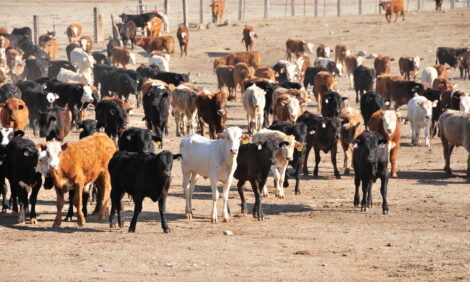



Insect Meal Could be the Future of Animal Feed
US - As demand for meat, milk and dairy products grows, the issue of what to feed livestock becomes more critical because of the limited availability of natural resources, ongoing climate change issues and competition between human food, animal feed and biofuel for land and water.Insect meals may be part of the solution, according to a new FAO study published in the latest issue of the scientific journal Animal Feed Science and Technology.
Livestock production is resource hungry: it occupies 75 per cent of all agricultural land, including crop and pasture land, and consumes eight per cent of global human water use, mainly for the irrigation of feed crops.
FAO and the Association Française de Zootechnie in Paris have conducted a review of hundreds of scientific studies on the potential use of insects as animal feed, a field that is still in its infancy.
The review covers five major groups of insects – black solider fly, the house fly, mealworm beetles, locusts, grasshoppers and crickets, and silkworms – and their distribution, rearing, environmental impact, nutritional attributes, constraints and their potential use as alternate feed.
“A quest for new sources of feed for livestock is a must,” said the study’s lead author Harinder Makkar, Animal Production Officer in the FAO Animal Production and Health Division. “This review of the literature is valuable because it is expected to open new areas for research and new avenues for large-scale use of insect products as animal feed.”
“Insects have many advantages over other feeds,” he added. “They grow and reproduce easily, have high feed conversion efficiency since they are cold blooded and can be reared on bio-waste. One kilo of insect biomass can be produced from around 2 kilos of waste.”
Nutritional Content
The crude protein content of the insects studied is 42-63 per cent and oil content up to 36 per cent. Some of the literature shows that insect meals, when added to animal feed, can replace 25 to 100 per cent of soymeal or fishmeal in the feed, depending on the animal species.
Mr Makkar noted that fishmeal production is no longer rising as oceans reach their harvest limits, and that sources of soy for cattle feed are also limited.
Some insect meals do not contain all nutrients in sufficient amounts needed by the livestock, for example, calcium, which is needed by growing animals and laying hens. Essential amino acids such as lysine and methionine are also deficient in some insect meals. Such nutrients would have to be added to the feed. Alternatively an “ideal” protein meal for livestock diets can be prepared by mixing meals from different insect species.
Other issues such as the contamination of feed by pathogens, pesticides, mycotoxins or heavy metals such as lead in the insects will have to be addressed.
Tests have found that pigs, poultry and fish will eat feed that contains insect meal from the five insect groups mentioned above. The rest of the feed is composed of carbohydrates including grains or agroindustrial byproducts like cassava residue or molasses.
In the case of feed suitable for ruminants like cattle, the scientific literature appeared to have only studied silkworm meal, which it found contained valuable protein and amino acids.
There are economic spinoffs from insect-based feed production. For low-oil feed, the unwanted oil in the insect meal could be extracted and used for various applications including biodiesel.
Original source: FAO report
TheCattleSite News Desk


